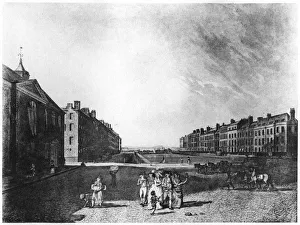Bloomsbury Collection (page 6)
Bloomsbury, a neighborhood steeped in literary history and artistic charm
All Professionally Made to Order for Quick Shipping
Bloomsbury, a neighborhood steeped in literary history and artistic charm. It was here that Virginia Woolf, one of the most influential writers of the 20th century, resided in 1930. Her presence still lingers in every corner, reminding us of her brilliance and creativity. The Marylebone pub stands proudly on the streets of Bloomsbury, serving as a hub for locals to gather and share stories over pints of ale. Its walls have witnessed countless conversations inspired by Woolf's works or debates about art and literature. On a wet winter evening in c1935, a book lover finds solace amidst the rain-soaked streets of Bloomsbury. The image captured by Fincham portrays the cozy atmosphere that permeates this neighborhood - perfect for curling up with a good book. Woolf's house on Fitzroy Square is an architectural gem nestled within Bloomsbury's vibrant landscape. It served as her sanctuary where she penned some of her most celebrated works. Today it stands as a testament to her enduring legacy. In memoriam to suffragette Emily Wilding Davison, Bloomsbury pays tribute to those who fought tirelessly for women's rights. Their courage echoes through time and serves as a reminder that progress is born from determination and sacrifice. A map from 1746 reveals how much Bloomsbury has evolved over centuries while retaining its unique character. Georgian architecture adorns Bedford Square, adding elegance to this already enchanting neighborhood. Away from London's bustling streets lies Mountain Church in Larrau - an unexpected connection between two distant places united by their love for artistry and spirituality. The Foundling Hospital Schools located in Berkhamsted provide education opportunities for underprivileged children - reflecting Bloomsbury's commitment to social welfare throughout history. Queen Square reigns supreme at the heart of Bloomsbury; its grandeur captivating all who pass through its gates. This regal landmark is a testament to the neighborhood's rich heritage.
















































